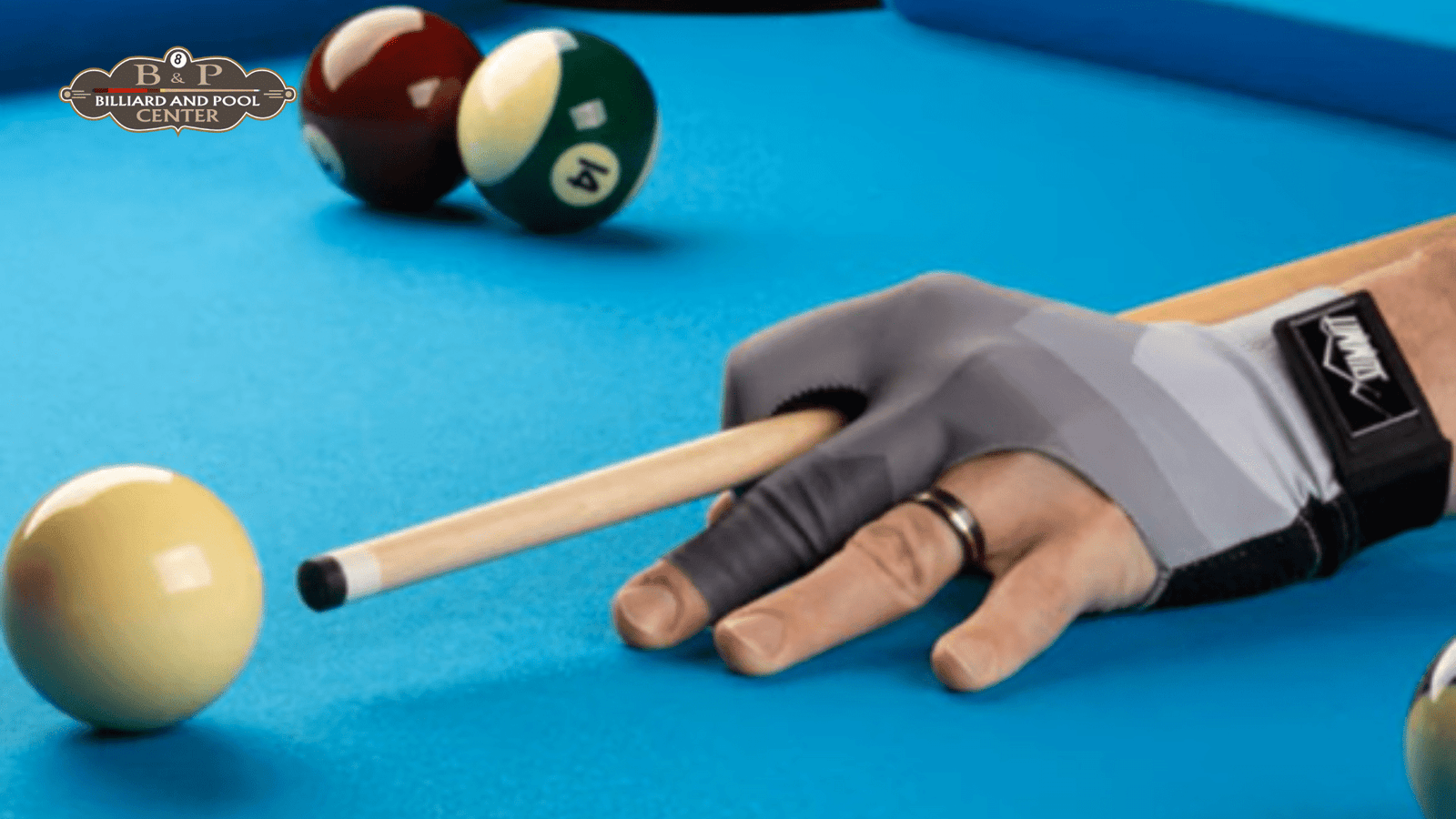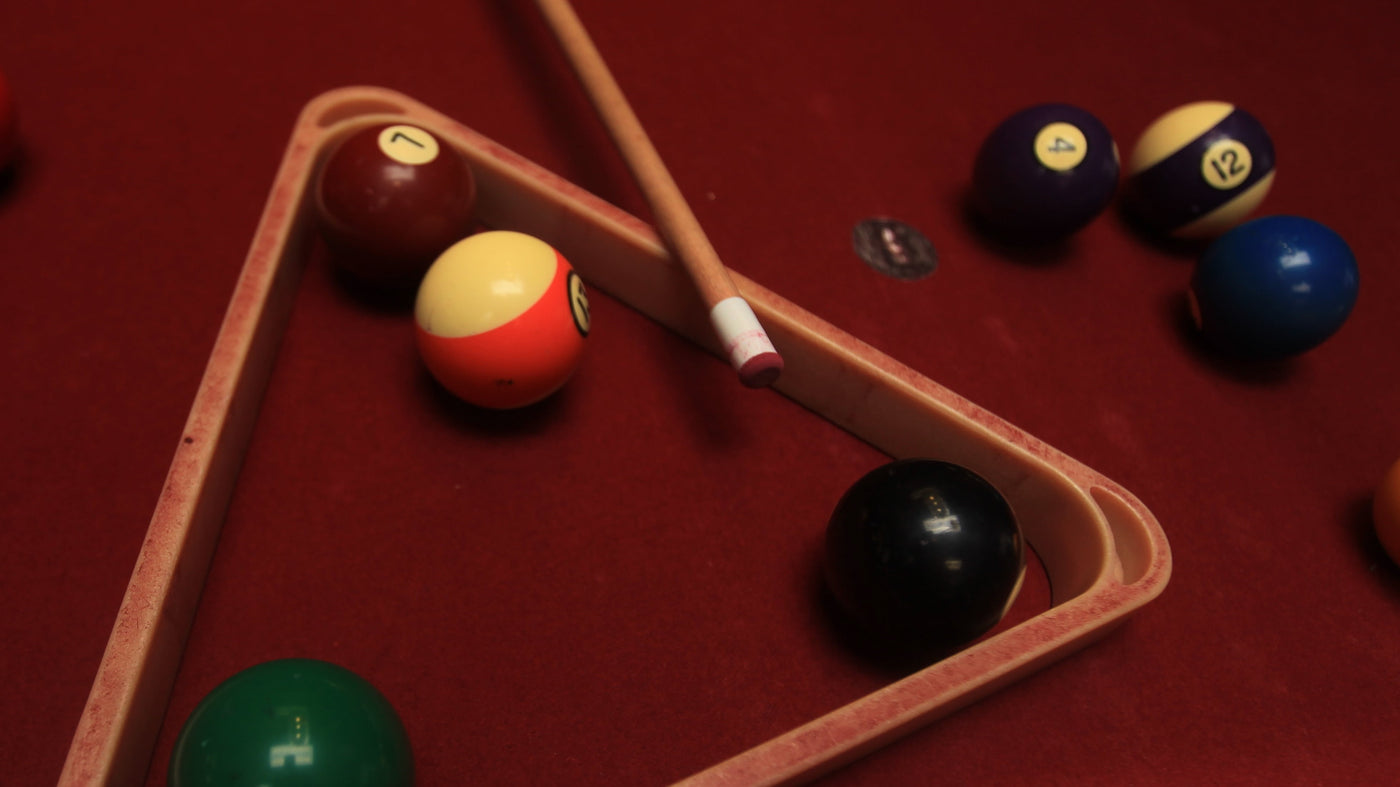Perfect cue ball control is the foundation behind every confident stroke and pinpoint position.
Once you learn how to make the ball stop right where you want, roll smoothly into position, or spin perfectly, you’ll realize how simple and satisfying the game becomes.
In this complete guide, we’ll break down how to master spin, stop, and follow shots, understand cue physics, and choose the right pool cues, shafts, and accessories that influence your control game.
Understanding How the Cue Ball Moves
Every shot you play is shaped by how the cue stick connects with the ball. The exact spot where your tip hits determines what happens next, whether the cue ball rolls, stops, spins, or drifts.
Think of it like this: a cue ball is just a smart messenger. It moves exactly based on what you tell it, and your tip position is the language it understands.
|
Type of Shot |
Where to Hit |
What Happens |
|
Center Hit |
Middle of the ball |
Straight, no spin |
|
Follow (Top Spin) |
Above the center |
Ball rolls forward |
|
Draw (Backspin) |
Below the center |
Ball stops or rolls backward |
|
Side Spin (English) |
Left or right side |
Ball changes rebound angle |
Once you get these basics right, you’ll feel more in control of every ball you strike.
Stop Shots: Simple But Powerful
The stop shot is one of the first and most important skills. It’s the simplest way to see how well your control works.
To play a clean stop shot:
1. Hit a little below the center of the cue ball.
2. Keep your stroke steady and level.
3. Don’t hit too hard, let the spin and friction do the work.
A perfect stop shot keeps your cue ball right in place after hitting the object ball. Once you learn this, you can control position play better and prepare for every next shot more easily.
Follow Shots: Move Forward With Control
A follow shot makes the cue ball move forward after it touches another ball. You’ll often use this shot when you want your cue ball to roll into position for the next shot.
Here’s how to do it right:
• Aim slightly above the cue ball’s center.
• Use a smooth, full stroke.
• Follow through naturally, don’t rush.
Balanced and smooth cues give perfect energy transfer and make follow shots much easier to predict.
Many players notice the difference when they switch their cue to a high end pool cue built for better accuracy.
Backspin and Draw Shots: Bring the Ball Back to You

A draw shot (or backspin) is one of the most satisfying moves in pool, it makes the cue ball roll backward after contact.
Here’s the secret:
• Hit a little below the center of the cue ball.
• Keep your cue stick level intact.
• Use a smooth, relaxed stroke
Backspin is perfect for setting up short control positions or defensive plays. Many pros prefer a carbon fiber pool cue for these shots, it stays straight, hits clean, and transfers your stroke energy more efficiently than softer cues.
Side Spin (English): The Tricky Art of Spin
Side spin, also called “English,” makes the cue ball move at different angles. It’s useful for tricky shots or when you need to change position.
Too much spin can throw your aim off or make you miss the shot. Use it lightly and only when needed for better control.
A carbon fiber cue helps with this by reducing deflection, so you can add side spin more accurately without losing your shot line.
Choosing The Right Cue To Improve Control
The cue with which you play affects your control more than you might think. The right pool cues feel balanced in your hands, giving you a smooth shot every time.
When choosing a cue stick, focus on the feel, not just the price tag. Great mid-range cues from Viking, McDermott, Jacoby, or Pechauer give dependable accuracy and feedback.
Look for:
• A comfortable weight (usually 18–20 oz).
• A straight and smooth shaft (12.5–13 mm).
• A solid joint that gives natural feedback.
Also, don’t forget your pool cue cases and billiards accessories like tip shapers and chalk, they keep your cue performing like new, every game.
Knowing Your Shaft and Cue Build
Different materials feel and play differently. That’s why cue makers design cues with a range of shafts and finishes, each influencing control in subtle ways.
Carbon fiber pool cues are known for their strength and low deflection. On the other hand, traditional billiards pool cues made from maple wood are great for players who prefer touch and feel.
|
Material |
Control Benefit |
Feel |
Care Needed |
|
Maple |
Natural feedback |
Softer, classic |
Needs cleaning |
|
Carbon Fiber |
Low deflection & straight roll |
Crisp, modern |
Very little maintenance |
|
Fiberglass |
Durable and budget-friendly |
Medium feel |
Easy upkeep |
Choosing the right cue shaft based on your stroke style is key, a stiffer shaft suits powerful hitters, while a slightly flexible one suits players with a lighter touch.
Knowing The Parts of Your Cue
A good player knows their equipment inside out. Learning the parts of a pool cue helps you understand how cues actually react and how to fix issues fast.
• Tip: Creates contact and spin.
• Ferrule: Absorbs vibration.
• Shaft: Transfers power and feel.
• Joint: Connects butt and shaft tightly.
• Butt: Adds weight and grip.
• Wrap: Helps steady your hand.
Taking a few minutes after each session to clean and inspect these parts keeps your cue performing right every time.
Applying These Skills In Real Games
Practicing spin or stop shots is only half the journey, learning to apply them during real gameplay is what makes them stick.
Start with drills:
• Play a line of stop shots from short to long distances.
• Mix follow and draw shots to learn different speeds.
• Try pairing slow and fast hits for cue ball distance control.
These habits make you more consistent whether you’re playing casual 8-ball at home or competitive 9-ball matches. You can also read more about technique rules and cue control applications in our detailed guide
Taking Care of Your Cue

Your cue performs best when treated right. Always store it properly inside padded pool cases, so it doesn’t warp or scratch.
Clean the shaft with a soft cloth, keep your tip shaped, and avoid leaving your cue in heat or moisture. Quality pool cue accessories like polishers, protectors, or wipes extend cue life and improve game consistency.
Advanced Control: Combining Spins and Strokes
Once you’re comfortable with basics, you can start blending different spins for finer control:
• Top + Right Spin: Helps cue ball follow and angle outwards.
• Back + Left Spin: Perfect for short draw and tighter angles.
These combos come in handy for complex safeties or breaking clusters apart. For more guidance on strategic shot play, refer to this helpful reference piece.
Avoid These Common Mistakes
• Hitting too hard on short shots.
• Lifting the cue during contact.
• Overusing English before mastering your aim.
• Skipping cue cleaning.
• Playing with mismatched cue weights.
Staying mindful of these will prevent frustration and help your cue respond just the way you want.
Quick Summary: Key Lessons
|
Technique |
Tip Position |
Goal |
Practice Tip |
|
Stop Shot |
Slightly below center |
Ball stops |
Smooth short stroke |
|
Follow Shot |
Above center |
Forward roll |
Steady follow-through |
|
Draw Shot |
Below center |
Pull back |
Moderate pace |
|
Side Spin |
Left or right edge |
Cushion control |
Use lightly |
|
Cue Care |
Regular cleaning |
Durability |
Store upright |
These simple steps turn solid mechanics into reliable cue instincts.
Frequently Asked Questions
Q: How can I make the cue ball stop after the shot?
A: Hit a little below center with a smooth stroke, enough backspin neutralizes motion.
Q: Which cue type is best for cue ball control?
A: A good maple or carbon fiber pool cue works great. Carbon fiber models are more precise, while maple cues offer a natural feel.
Q: Why does the cue ball curve unexpectedly?
A; It’s usually from unwanted side spin or a tilted cue. Keep your stroke straight and parallel to the table.
Q: How do I practice spin control?
A: Use visuals like a striped ball to see spin direction. Adjust speed and tip position till movements feel predictable.
Q: Are carbon cues really worth it?
A: Yes, if you play regularly. They stay straight, need less care, and give excellent feedback.
Bringing It All Together: Perfecting Your Control Game
Every great shot begins with understanding how the cue ball reacts to your stroke.
When you can combine spin, follow, and draw with balance and accuracy, control becomes natural.
Each stop, follow, and spin shot teaches you how to shape the game in your own way.
If you’re ready to fine-tune your game or eager to experience better-quality cues and gear, at Billiard and Pool Center, you’ll find everything you need to build consistency, comfort, and confidence.
Turn every shot into a statement of focus and feel. Play smart, and let control define your game.


